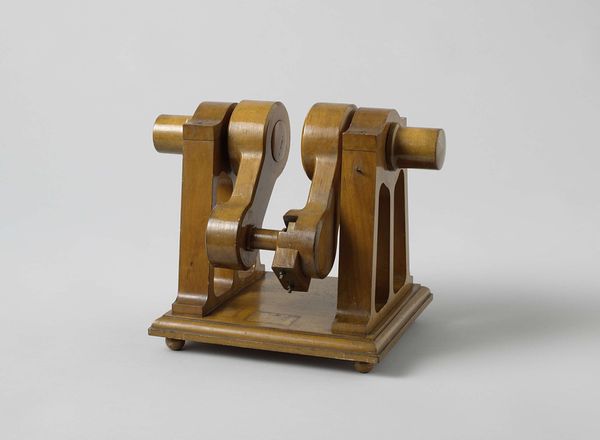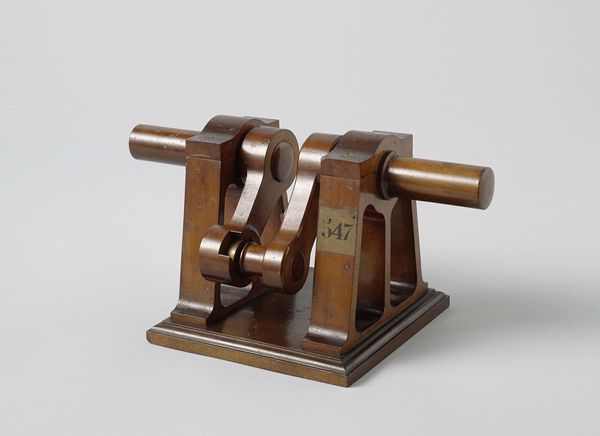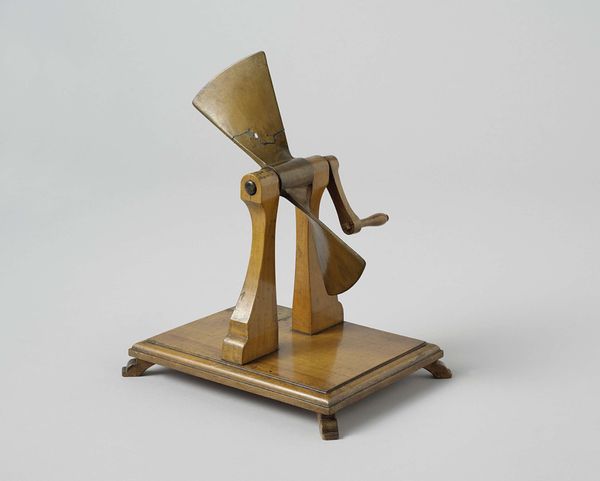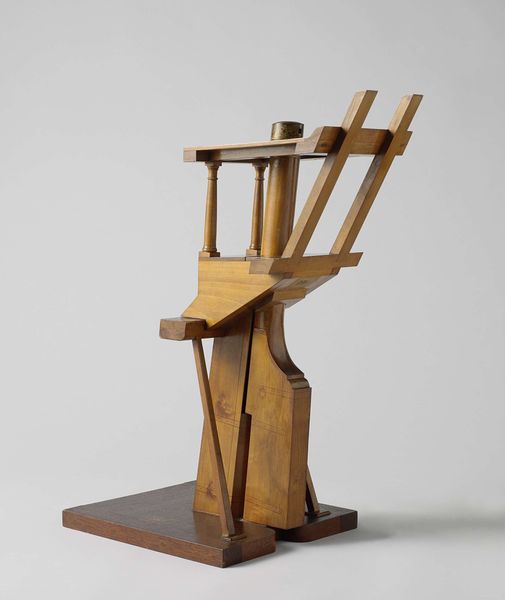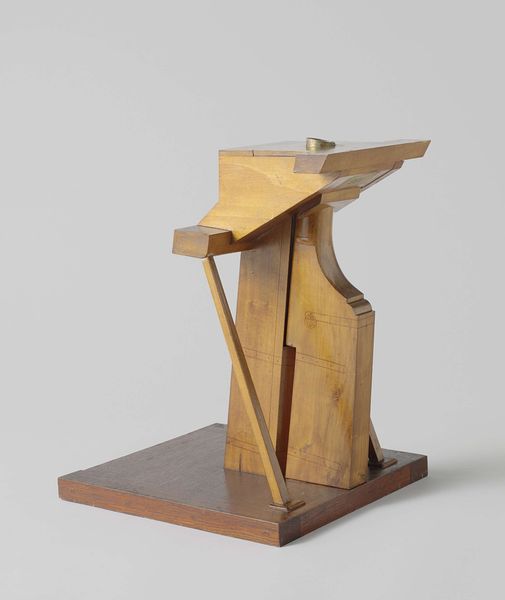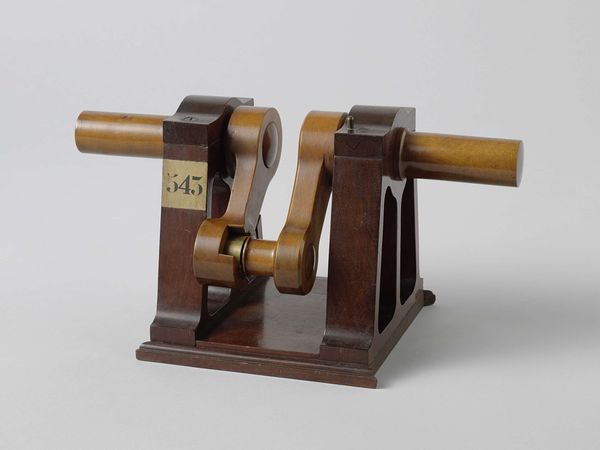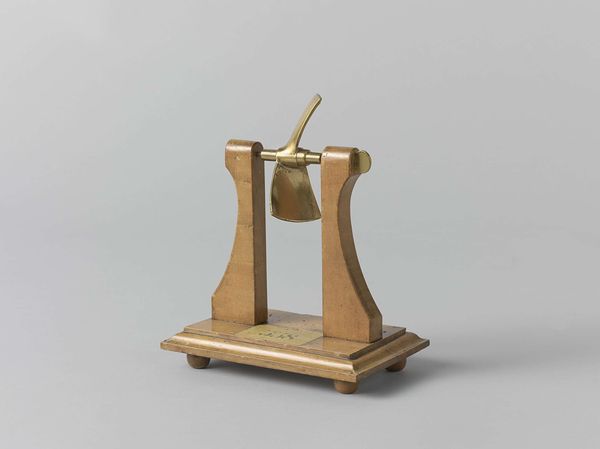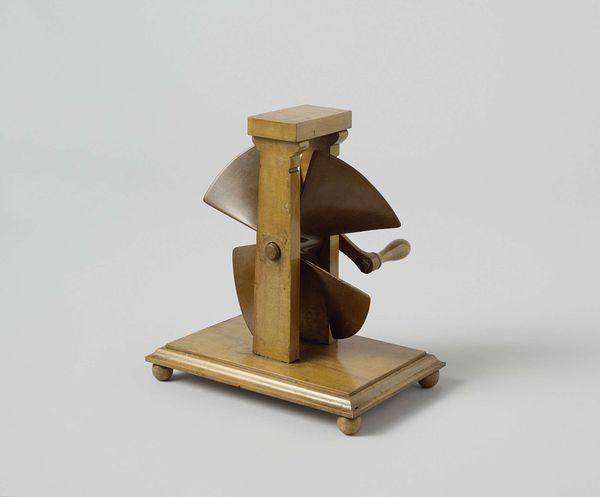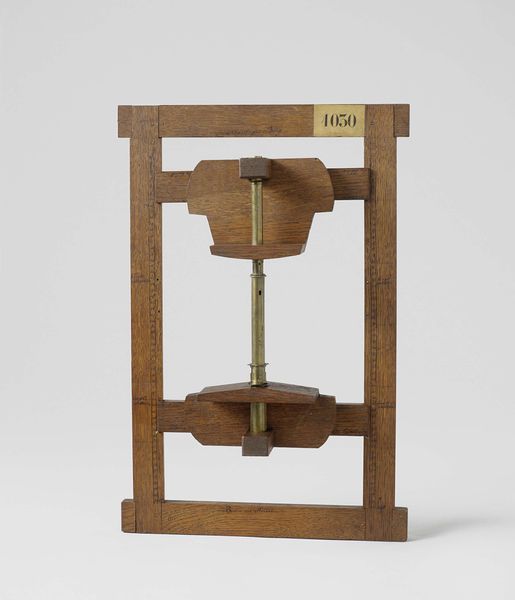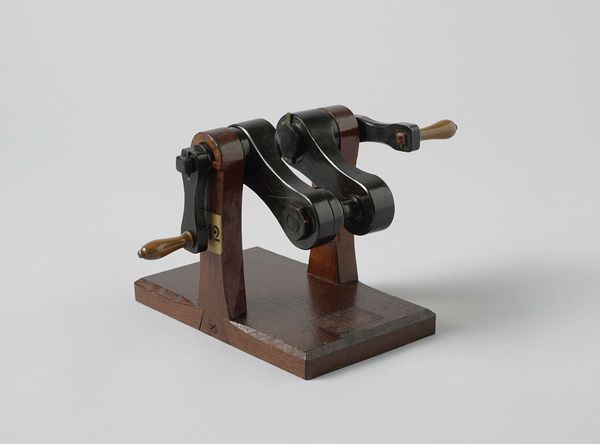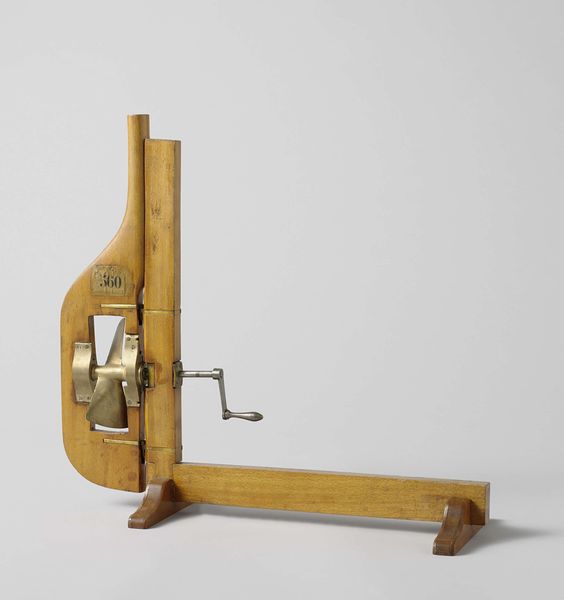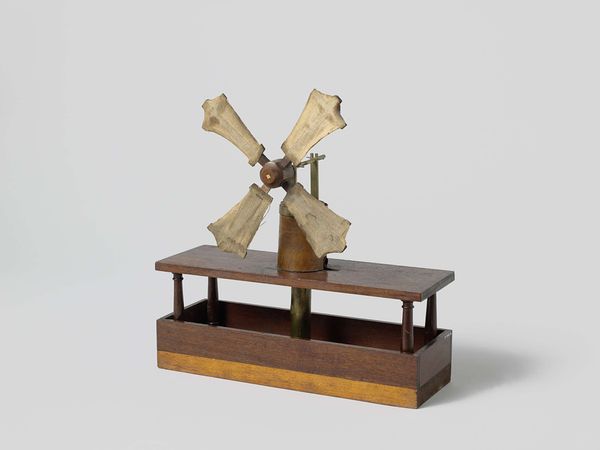
sculpture, wood
#
3d printed part
#
shading render
#
virtual 3d design
#
architecture mock-up
#
3d shape
#
prop product design
#
geometric
#
sculpture
#
metallic object render
#
3d modeling
#
wood
#
cut-out
#
product render
Dimensions: height 26 cm, width 20.5 cm, depth 15 cm
Copyright: Rijks Museum: Open Domain
Editor: We’re looking at the "Model of a Two-Blade Parabolic Propeller," created around 1847. It appears to be a wooden sculpture. My first impression is… industrial, almost like a teaching aid or an early invention. What do you see in this piece, considering its historical context? Curator: This model, quite unassuming at first glance, actually sits at a fascinating intersection of technological advancement and social ambition. Think about the mid-19th century; it was a time of feverish invention, driven, of course, by the burgeoning industrial revolution and concurrent political shifts. The model isn’t just about aerodynamics; it speaks volumes about the era's belief in progress through technology. Consider who this model may have been created for. Editor: So it’s not just about engineering but also about the societal drive behind it. Was it common for inventors to create presentation models like this, aiming to capture the imagination—and investment—of potential backers? Curator: Exactly. The very act of creating this detailed wooden model was a strategic attempt to make this very complicated innovation tangible and attractive. Wood itself is not accidental. Wood represented readily available materials and that democratic appeal made a new, perhaps scary, invention familiar and easier for investors and the public to process. Who had access to, and control over, new technology mattered then just as it does today. Does knowing this inform your impression? Editor: Absolutely, it moves the model from a purely technical object to a cultural artifact reflecting the hopes and concerns surrounding technological change at the time. So, this is about accessibility in innovation, which brings a socio-political element to it? Curator: Precisely. The piece’s existence reveals the relationship between invention, investment, and public perception, and I'm now also noticing the little placard or ID marker. What are your thoughts? Editor: Fascinating, viewing art this way has given me a new respect for how much of social life gets wrapped up in a so-called simple object. Curator: Agreed, I've been drawn to examine not just how inventions are made, but *why* and *for whom*.
Comments
No comments
Be the first to comment and join the conversation on the ultimate creative platform.
